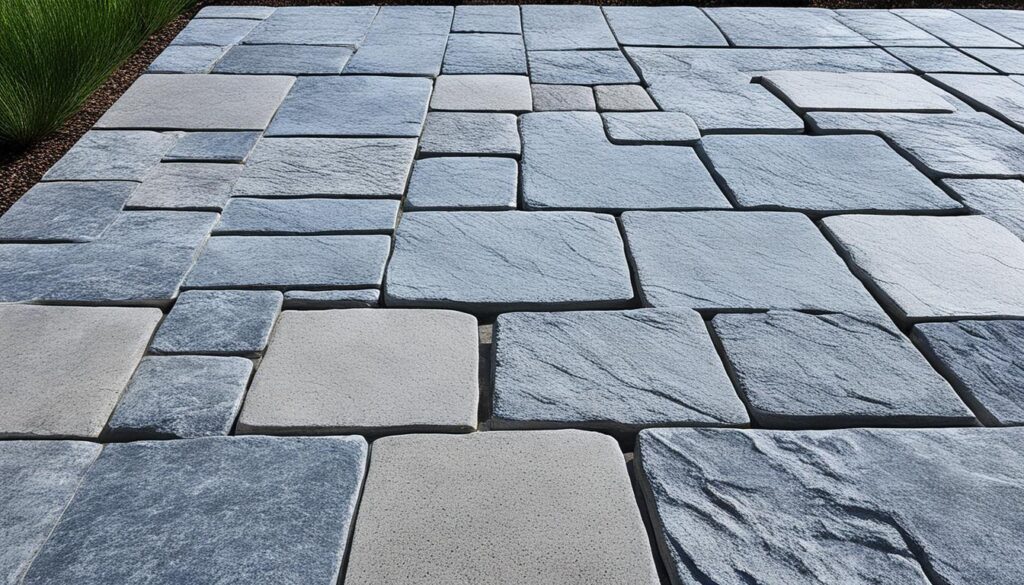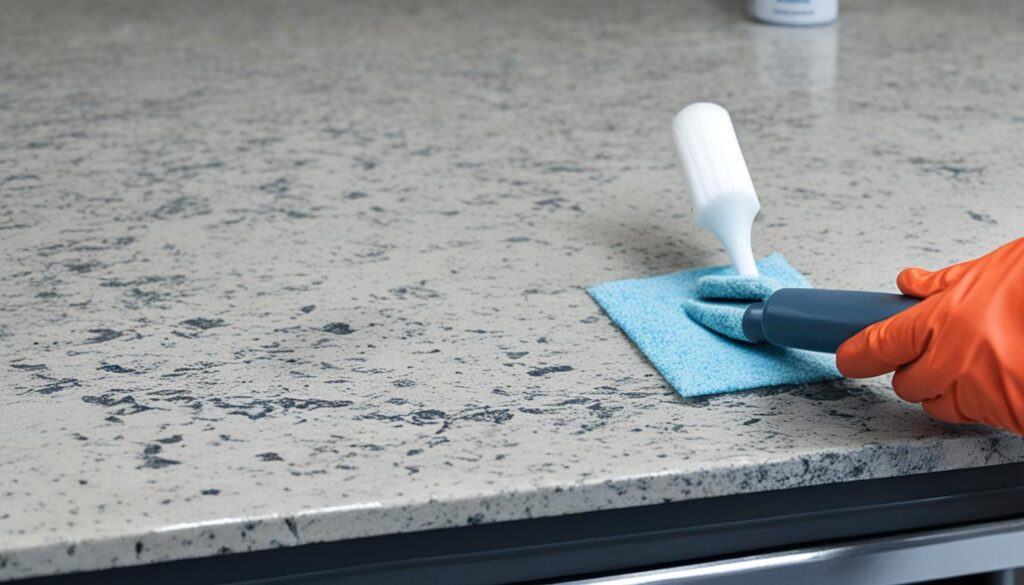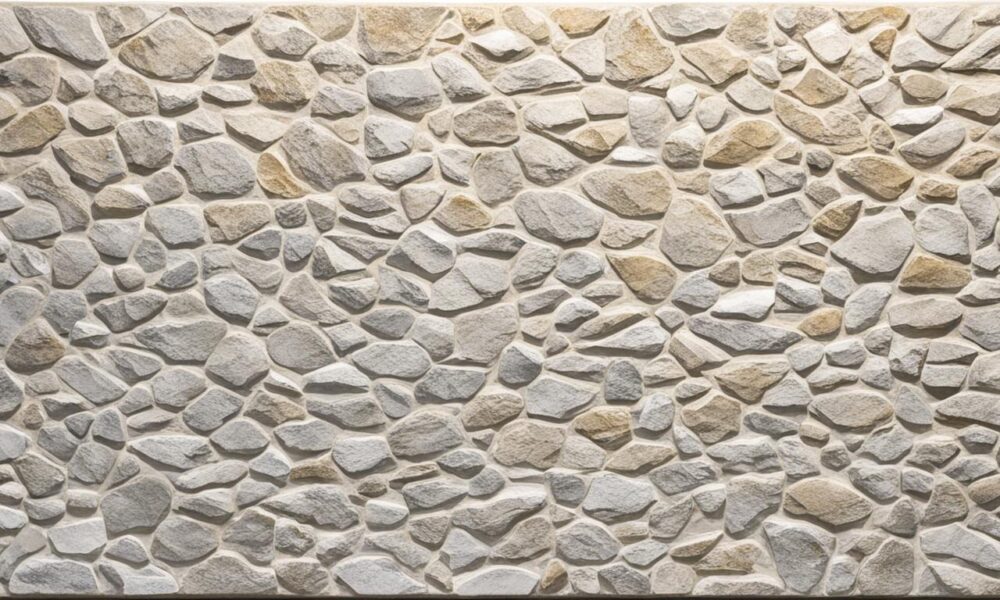Sealing Natural Stone Before Grouting: A Must?
The natural allure of stone tiles lies in their unique patterns and earthy tones, a choice that brings warmth and a touch of the natural world into your living space. When it comes to grouting with natural stone, an imperative pre-step often overlooked is sealing natural stone. This not only ensures the preservation of your stone’s pristine condition but also simplifies future maintenance regimes.
Whether it’s a sumptuous marble countertop or a rustic slate floor, before inviting the permanence of grout between each tile, it is essential to apply a sealant. In doing so, you guard against the stone’s porosity, which can otherwise absorb grout and mar its beauty with a hazy finish. Through adequate natural stone care, you can maintain the integrity and aesthetic of your stone surfaces for years to come.
Key Takeaways
- Sealing is crucial before grouting to protect stone tiles from stains and damage.
- Natural stone’s porosity makes it vulnerable without a protective seal.
- A sealing layer simplifies future cleaning and maintenance of stone surfaces.
- The aesthetic longevity of natural stone depends on proper pre-grouting care.
- Using the right sealing products is vital for both initial application and long-term upkeep.
- Properly sealed stone surfaces make subsequent grouting efforts much cleaner and more effective.
Understanding the Importance of Sealing Natural Stone
When contemplating the timeless elegance of natural stone surfaces, the importance of sealing natural stone cannot be overstated. An intricate characteristic of stone is its innate porosity, which while adding to the visual appeal, also presents a vulnerability to staining and moisture absorption. Sealing is the first defense against these potential damages, which, if left unchecked, can tarnish the natural beauty of the stone. Consequently, this foundational step is paramount in the best practices for natural stone installations and maintenance.
What Makes Natural Stone Porous?
Natural stone, by its very nature, is formed with myriad microscopic spaces known as pores. These pores are gateways for moisture, oils, and grime to infiltrate the stone, leading to possible discoloration and structural weakness. This porous nature necessitates a protective approach, where sealing these minute voids becomes essential in safeguarding the stone’s integrity and appearance.
Benefits of Sealing Before Grouting
Equipping natural stone with a sealing shield prior to the grouting process offers a multitude of benefits. It creates a barrier that resists the infiltration of grout particles, oils, and water-based stains—prolonging the surface’s pristine condition. Additionally, this preparative measure significantly reduces the risk of grouting haze, a common issue that can obscure the stone’s natural luster. Following this grouting advice for stone not only enhances the durability and aesthetic of your stone but also eases maintenance, making it a smart and necessary investment for any stone tile application.
Preparing Natural Stone for Sealing
When embarking on the journey of sealing tips for natural stone, it’s crucial that meticulous preparation precedes the sealing process to ensure the longevity and beauty of the stone surfaces. Before a sealer is applied, adherence to specific natural stone maintenance procedures is vital. Owners of natural stone must take diligent steps not only to clean but to inspect and prepare their stone tiles meticulously for optimal sealing results.
Cleaning and Stain Removal Best Practices
The fundamental first step in preparing natural stone for sealing involves thorough cleaning. Use a suitable stone cleaning product, such as LTP Grimex, to remove any residues, dirt, or grime that might have accumulated during installation. Pay particular attention to the stone’s surface, ensuring all areas are reached, especially grout lines and recesses. In instances of more stubborn stains, a specialized stain remover designed for natural stone should be employed. This act of cleaning ensures that when the sealing occurs, it bonds cleanly and uniformly to the stone.
For the best results, always follow the manufacturer’s instructions when using cleaners or stain removers. Gentle, non-acidic formulas preserve the natural integrity of the stone while providing effective cleaning power.
Ensuring Complete Dryness Pre-Sealing
Prior to the sealant’s application, it is imperative that natural stone tiles be thoroughly dried. Residual moisture from installation can linger within the stone, compromising the sealer’s performance. A moisture meter can be a worthwhile investment for homeowners, providing precise readings to confirm dryness. Once dry, conduct a small test with your chosen sealer on a discreet area of the tiles. This key step will not only confirm the product’s compatibility with your natural stone but also reveal the sealer’s potential impact on the stone’s coloring and texture.
Following these initial preparatory steps, sealing can commence with confidence that the natural stone is in the ideal state to receive the protection it needs.

How Sealing Natural Stone Protects Your Investment
Among the best practices for natural stone, sealing is undoubtedly a cornerstone. Delving into natural stone care, one quickly understands that sealing is not merely an additional step but an investment protection strategy. By sealing before grouting, homeowners create a resilient barrier that guards against a variety of environmental harms that can compromise the stone’s integrity.

Sealer acts as armor against potential staining agents such as spilled liquids, grout chemicals, and even dirt that can be worked into the stone over time. Not only does the practice prevent unsightly blemishes, but it also repels everyday dirt and debris, making routine cleaning tasks considerably easier. With natural stone surfaces being highly susceptible to absorption, sealing helps prevent these issues before they begin.
In the context of long-term maintenance, sealed surfaces demand less frequent intensive care, saving both time and resources. Instead, a straightforward regimen involving gentle, specialized cleaning agents is typically all that’s required to maintain the stone’s appearance. These specialized products are specifically formulated to enhance the sealant’s protective qualities without undermining its effectiveness.
By fully embracing sealing as part of natural stone care, homeowners ensure that the stone’s beauty and structural soundness are maintained, allowing it to stand the test of time and usage. The elegance of your stone surfaces is thus preserved, reflecting the forethought put into their longevity.
- Sealing shields natural stone from moisture penetration and staining.
- The sealed stone maintains its natural aesthetic with less intensive cleaning.
- Regular upkeep after sealing is more efficient and cost-effective.
- Utilizing sealers and cleaning agents designed for natural stone optimizes longevity.
Achieving an ideal outcome in natural stone care hinges not only on getting the sealing done but on doing so with the correct approach and products. It’s clear that sealing your natural stone is a vital step in preserving its intrinsic value and beauty for years to come.
“Should Natural Stone Be Sealed Before Grouting”
The optimal care of natural stone often involves a critical step prior to grouting – sealing. This protective act is considered one of the best pieces of grouting advice for stone by those who cherish the longevity and timeless appeal of their installations. The debate centers not on whether sealing is necessary, but on when and how it should be carried out to ensure both the beauty and durability of the stone.
The Debate Around Sealing and Grout Adhesion
Concerns have been raised regarding sealing’s impact on grout adhesion. Some worry that if the sealer inadvertently coats the crevices meant for grout, it might impede the bonding process. Despite these apprehensions, the evidence points to a negligible effect on adhesion when sealing is performed with precision. Provided that the application is conducted with care, avoiding the edges where grout is to be applied, the integrity of the grouting remains intact. In dealing with sealing natural stone, the emphasis is on strategic application rather than avoidance of sealing altogether.
Professional Recommendations for Sealing First
Industry professionals universally recommend sealing stone prior to the introduction of grout. The advantages of pre-sealing ensure that cleanup is facilitated, and risks of staining are significantly minimized. For those dealing with sensitive stone types, such as marble, the practice of sealing first becomes even more pivotal. Professional natural stone maintenance advocates suggest executing a test area to gauge the reactions between the sealer, stone, and subsequent grout product. This proactive approach mitigates the risk of unwelcome surprises during the actual application.
To further clarify the process, here’s a table juxtaposing the considerations of sealing before and after grouting:
| Consideration | Sealing Before Grouting | Sealing After Grouting |
|---|---|---|
| Grout Cleanup Ease | Easier, as sealant prevents grout from adhering to the surface | More challenging, grout may cause haze on unsealed stone |
| Risk of Staining | Lower, protective layer repels grout and other staining agents | Higher, as stone pores are exposed to grout and spills |
| Choice of Sealer | Flexible, can be chosen based on the stone’s needs | Limited, must not react adversely with grout residue |
| Long-Term Maintenance | Facilitated, as the sealing foundation simplifies upkeep | May be more intense if initial staining is not mitigated |
The collective wisdom within the realm of stone care tips the scales in favor of sealing as a prelude to grouting. With well-informed techniques and due diligence in the preparation, sealing enriches the natural beauty of stone and endows it with a resilience that prepares it for the grouting to come.
Selecting the Right Sealer for Your Stone Tile
Embarking on the journey of sealing natural stone necessitates choosing an appropriate sealer—a crucial decision that influences the longevity and appearance of your stone surfaces. Indeed, an optimal selection emerges as a core principle among the best practices for natural stone projects. In this regard, understanding the functional differences between various sealers and knowing how to test their effectiveness are fundamental sealing tips for natural stone.
Differences Between Topical and Penetrating Sealers
Topical sealers provide a protective film over the stone surface, creating a barrier against stains and spills. While they are effective for guarding against external agents, they tend to wear away over time and may require more frequent reappearance. On the other hand, penetrating sealers dive deep into the pores of the stone, filling them and creating an internal shield. This type protects the stone from within, thereby enhancing its durability against moisture and contaminants.
How to Test Your Sealer Effectiveness
An effective sealer will ensure that water and other liquids bead on the surface, rather than being absorbed by the stone. To assess this, apply the sealer to an inconspicuous area and monitor the outcome after the manufacturer’s recommended drying time. If water droplets bead rather than penetrate, the sealer functions as intended, indicating your natural stone is adequately protected.
Step-by-Step Guide to Sealing Natural Stone Tiles
Embarking on the task of sealing natural stone is essential for those who wish to maintain the integrity and beauty of their flooring or tiling. The process, when executed correctly, establishes a shield against spills and stains, ensuring your stone surfaces remain impervious to moisture and other potential forms of damage. Taking a detailed look at the necessary steps, we provide a comprehensive approach to sealing, setting the stage for successful grouting with natural stone and upholding the quality of your investment.
Application Techniques for Even Sealer Coverage
Beginning with the application, the initial stage involves the careful distribution of a single coat of sealer across the stone tiles’ surfaces. This safeguard, crucial for sealing before grouting, hinges on the use of a dedicated sealer applicator. Whether opting for a sponge, brush, or pad, the implement must guarantee a consistent spread, reaching every crevice and corner without leaving behind any uncovered sections. Proper application results in an even coat that will set the foundation for optimal protection and performance.
Following the sealer’s application, monitoring for any excess is critical. Excess sealer, if left unaddressed, can lead to unsightly residue or discoloration. As such, one must wipe away any surplus product, employing a clean, lint-free cloth or sponge to achieve a polished, streak-free finish. It is these careful steps that result in a seamless barrier against potential staining agents.
Recommended Drying Time for Maximum Protection
Once the sealer is in place, understanding and adhering to the recommended drying time underpins its protective qualities. The sealed surfaces must remain undisturbed by water or heavy use for at least 24 hours, allowing the sealant to cure thoroughly. This patience ensures the sealer’s efficacy is not compromised and full protective capabilities are realized. Post-grouting, an additional application of sealer may be necessary to reestablish this barrier and render the stones impervious once more. Remember, cleaning of the sealed area should only commence after three days, giving ample time for the sealer to set and protect your natural stone effectively.
By stringently following these calculated steps, the process of sealing natural stone will extend the life and preserve the lustrous appeal of your natural stone, ultimately leading to a hassle-free grouting with natural stone experience.
Conclusion
As we come to the close of our comprehensive guide on sealing and maintaining natural stone, it’s clear that the practices you adopt will determine the enduring beauty and functionality of your investment. Regular care, informed by the best practices for natural stone, is not just a recommendation—it’s a cornerstone of maintaining the elegance that natural stone brings to your space. Ensuring this longevity means committing to a routine that embraces both natural stone care and the periodic refreshment of its protective seal.
Long-Term Care and Maintenance for Natural Stone
Long-term maintenance of natural stone is a gentle dance of vigilance and care, requiring homeowners to treat their stone surfaces with tailored products that respect and enhance the material’s unique properties. The integral part of this upkeep is to engage in proper cleaning regimens, using recommended cleaning solutions like LTP Waxwash for floors or STONETECH cleaning products for various stone types. These specialized formulations play a pivotal role in natural stone maintenance, ensuring that the stone remains pristine while its protective sealers stay effective.
The Value of Regular Re-Sealing in Stone Longevity
The act of re-sealing is just as crucial as the initial seal. To echo the timeless beauty natural stone provides, one must anticipate re-sealing every few years. This is not merely for aesthetics but for the functionality and protection against the daily wear and tear that all stone surfaces inevitably encounter. Stripping old sealant and applying a new layer is a vital part of the natural stone care cycle that sustains the material’s resilience and grandeur. Expert guides and DIY tutorials underscore the importance of these practices, ensuring that whether you are an avid do-it-yourselfer or prefer professional care, your stone can maintain the timeless allure and robust nature that was intended from the very beginning.



